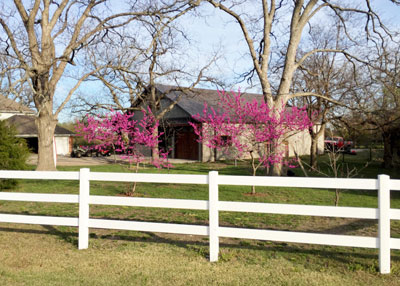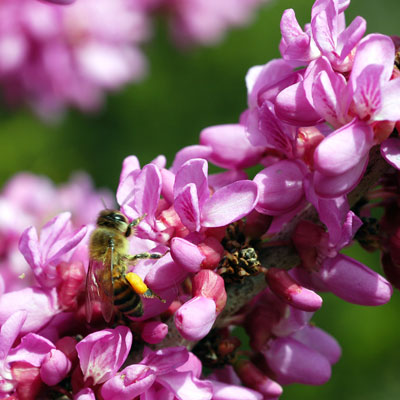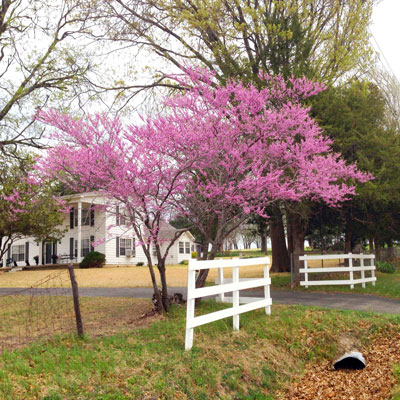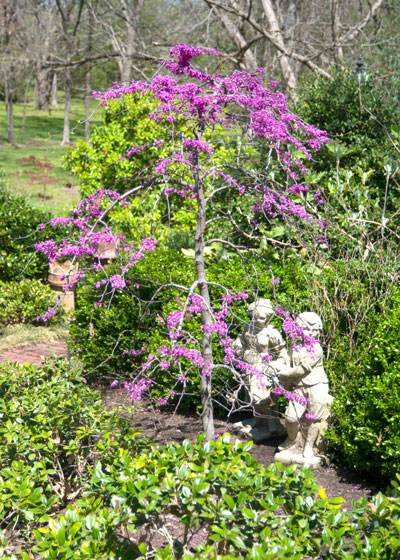Redbuds Welcome the Spring

When that horrific cold spell hit one month ago, I had several people ask if redbuds would survive it. I assured them that any plant named Cercis canadensis was almost a lock at survival. That’s “canadensis,” as in “Canada.”
This plant is native to areas of North America that regularly see temperatures much colder than we saw. So, no problem there.
There are species that are native to the Big Bend Country and Southwest Texas where temperatures get very hot in the summer. So no problem there, either.
Redbuds came ready to play in our gardens!

Here are the important details…
Keep these facts in mind and you’ll get the most out of your redbuds.

• They are small to mid-sized trees. Mature heights and widths from 15 to 30 ft.
• They are deciduous (lose leaves in winter). Fall color is unexceptional.

• Spring flower colors range from white to pale pink, hot pink and on to burgundy.
• Leaves are rounded, 1-1/2 to 3 ins. in diameter. Most are dull, but some are glossy, deep green.

• Trees can be used as solitary shade trees, but are usually more effective beneath other, much taller trees. They are tolerant of shade.
• Life expectancy averages 25-40 years.

• More easily established from containers than as balled-and-burlapped nursery stock.
• Few pest problems, although leaf rollers will tie leaves together and turn them brown. Red-headed wood borers will invade older trees as they weaken.

